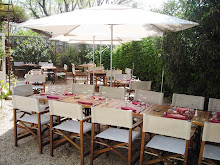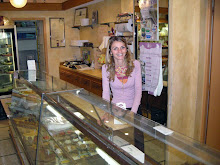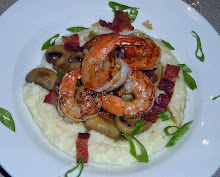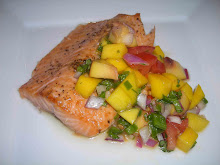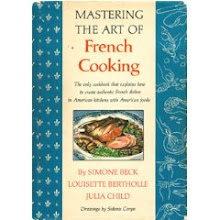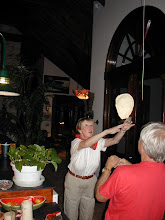Le Bistrot du Paradou is as authentic as possible when it comes to a real French bistro. Located in the small and idyllic village of Paradou, it’s about a 15 minute drive from Saint-Remy-de-Provence and well within driving distance from Arles or Avignon. Another reason to visit is it's one of cookbook author Patricia Wells’ favorite bistros. Patricia Wells is well known throughout Provence and divides her time between Paris and her lovely farmhouse and cooking school in the Var department of Provence.
For better viewing, click photos to enlarge.
This quintessential French bistro is an institution that is loved and adored not only by the locals but also the international set and tourists that are “in the know.” Even though Le Bistrot du Paradou has been discovered, it feels about as far from a tourist trap as anything could possibly be. Case in point, the two couples seated next to us were from Dubai and Scotland and were spending a long weekend in their second home in nearby Saint-Remy.
The atmosphere in the bistro oozes with character and old world charm, the generous servings of fabulous food, wine, and cheese, all served in a leisurely fashion, never disappoint. You can tell by the pictures that it is a warm and friendly bistro. Dejeuner (lunch) is 49 euros per person and includes wine, dessert, and coffee.
As you can see, each day of the week features a set menu with specialties of the area, such as aioli, lamb, lapin (rabbit) and Breese chickens. We wisely called a couple of weeks in advance for a reservation for Tuesday, the day their wonderful local lamb, Agneau de Pays, is on the menu. Local lamb is also one of the most popular dishes in Provence. We had house guests and didn’t not want them to visit Provence without having the pleasure of dining here. I can’t emphasize enough how essential it is to make advance reservations for this very popular bistro.
 |
| Salade Italienne - Italian salad |
 |
| Sauccisson lyonnaise aux Pistaches - Sausage with pistachios and lentil salad |
 |
| Gigot d'Aneau - roasted lamb |
This is the cheese tray, which is passed from table to table after you make your selections. Can you imagine a more generous cheese course?
If you have room for dessert, they're all homemade at Le Bistrot du Paradou.
 |
| Mousse au chocolat |
 |
| Creme caramel |
Thanks for our friendly waiter, Meakin was able to have a peek in the kitchen. That’s the Chef in the green jacket that the waiter is kissing on the cheek.
Le Bistrot du Paradou
57 Avenue de la Vallée des Baux
13520 Paradou, France
+33 4 90 54 32 70
Reservations are essential
A "do-not-miss" experience when you're in Provence
Highly recommended - you'll thank me for this one
The bistro doesn’t have a website, but you can find them on Facebook
A "do-not-miss" experience when you're in Provence
Highly recommended - you'll thank me for this one
The bistro doesn’t have a website, but you can find them on Facebook
Although it was very tempting to take a leisurely drive through the countryside after this splendid meal and retire to our house for a nap, we wanted to introduce our guests to the Moulin Jean Marie Cornille, an olive oil mill dating back to 1610 in the nearby tiny village of Maussane-les-Alphilles. Most olive oils are pressed from a single variety of olives, but here they are pressed from a variety of olives. Patricia Wells calls Jean Marie Cornille’s olives oils “the Chateauneuf-du-Pape of olive oils.” I don’t know how you could get a higher recommendation.
While browsing and tasting their various olive oils in Cornille boutique, we purchased two bottles of olive oil for our French kitchen to use in vinaigrettes and also for dipping pieces of crusty French bread. One was a virgin black olive oil that uses only black (ripe) olives with a fruity flavor that was reminiscent of cooked artichokes. The other bottle was a green extra virgin olive oil that was also fruity with undertones of fresh almonds, grapefruit, and fresh artichokes. Meakin had a peek inside the 17th century mill and here is a close-up photo of one of the granite stone wheels that they use to press the olives on arrival at their mill.
Olive harvest time begins at the end of October and lasts until the end of December. For more about olives and how they are grown, click here. For more about how the olives are harvested and pressed, I think you’ll enjoy this informative video, link here. You’ll see the special combs and nets that are used to harvest the olives and the plastic crates that are used for transporting the olives to the mill, along with interesting photos of how the huge granite wheels such as the above press the olives to produce the oil.
Moulin Jean Marie Cornille
Rue Charloun Rieu
13520 Maussane les Alpilles
+33 (0)4 90 54 32 37
Highly recommended if in the area
I was anxious to try Le Bistrot du Paradou’s lentil and sausage salad that they served as an entree (appetizer) at home. It satisfied me as a light dinner or also makes a nice beginning to a French meal. They used a Lyon sausage with pistachios, which I couldn’t find, so I substituted garlic sausage that gave the look and feel of what I was after to the dish. It’s important to use French green lentils because they have a nutty flavor and don’t fall apart as ordinary supermarket lentils tend to do. Just be sure not to overcook the lentils and you’ll be fine.
French Lentil Salad with Garlic Sausage
From My Carolina Kitchen, serves 4
Printable Recipe
1 cup French green lentils
4 ½ cups cold water
Kosher salt
1 tablespoon extra-virgin olive oil, plus more for drizzling
1 medium peeled onion, finely chopped
1 medium carrot (or 2 small ones), peeled & finely chopped
1 teaspoon fennel seeds
3 tablespoons chopped fresh flat-leaf parsley
Freshly ground black pepper
1 tablespoon red wine vinegar, more to taste
14 to 16 ounces fully cooked garlic sausage
4 fresh sprigs of parsley for garnish, optional
In a heavy 2 quart saucepan or stockpot, bring lentils and 1 teaspoon salt to a boil, then reduce heat and simmer, uncovered, until lentils are just tender but not falling apart. This will take between 12 and 25 minutes. Taste as you go along for doneness.
While the lentils simmer, heat 1 tablespoon extra-virgin olive oil in a non-stick sauté pan over moderate to low heat, then cook onions, carrots and fennel seeds, covered, stirring occasionally, until vegetables are very tender but not browned, about 10 minutes, then add a bit of kosher salt to taste.
Meanwhile slice the garlic sausage into ¼” slices. Heat sausages over low heat, taking care that they do not brown. You want them just to heat through.
To serve, place a good size spoonful of lentils in the center of 4 plates and arrange 4 slices of the garlic sausages around the lentils. Drizzle with a bit of extra virgin olive oil if you wish and serve right away, garnished with a sprig of fresh parsley if desired.
I haven’t had a chance to roast a lamb since we’ve returned, but had I, I would have definitely chosen this recipe from Patricia Well’s Bistro Cooking. We have used this recipe for lamb on numerous occasions and it has never failed us.
Roasted Leg of Lamb
Gigot roti au gratin de Monsieur Henny, serves 8 to 10
Adapted from Bistro Cooking by Patricia Wells
Printable Recipe
1 boneless leg of lamb, about 6 to 7 pounds
5 cloves of garlic, peeled and sliced into very thin slivers
2 pounds of baking potatoes, peeled and very thinly sliced
5 medium tomatoes, thinly sliced
2 large yellow onions, thinly sliced
Kosher salt and freshly ground black pepper
1 T chopped fresh thyme
2/3 cup dry white wine
¼ cup extra virgin olive oil
1 tablespoon chopped fresh rosemary
Preheat the oven to 400F. Arrange the vegetables as follows: first a layer of the potatoes, then the onions, followed by the tomatoes. Season each layer with one third of the garlic and thyme plus some salt and pepper. Pour the wine over the vegetables, followed by the olive oil.
Trim the leg of lamb if it’s fatty. Season liberally with salt and pepper and sprinkle with the fresh chopped rosemary. Place a rack over the vegetables to hold the lamb. Roast, uncovered, for about an hour and fifteen minutes, turning the lamb every 15 minutes and basting it with some of the liquid underneath. For rare to medium rare, remove the lamb from the oven when it reaches 125 degrees for rare and 130 for medium rare. Tent the lamb with foil and let it sit for 15 to 20 minutes to rest. Slice and serve alongside the vegetables.
For better viewing, click photos to enlarge.
This will be shared with Foodie Friday at Rattlebridge Farm and Miz Helen’s Country Kitchen Full Plate Thursday.
Have a great weekend everyone.







































































